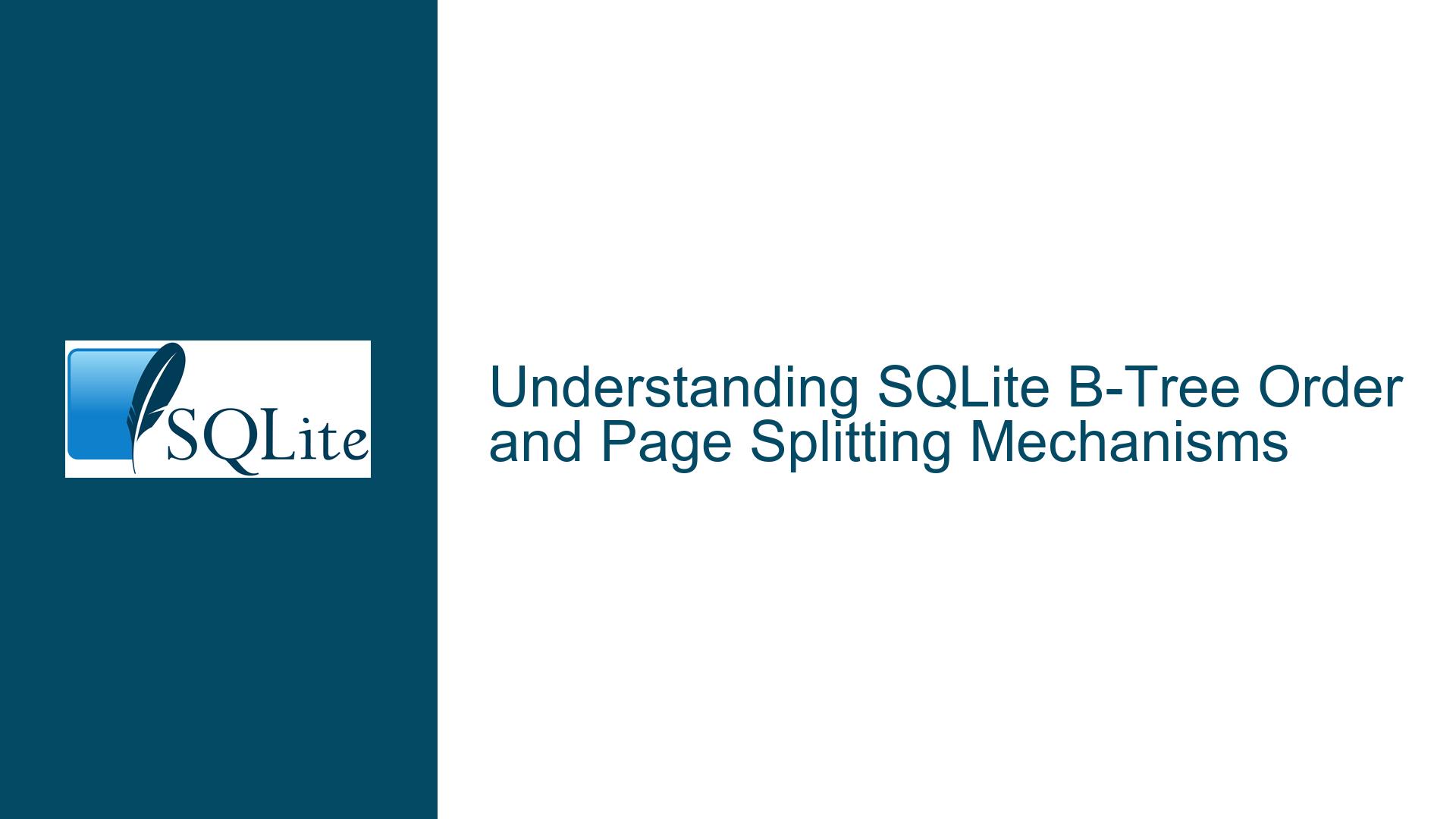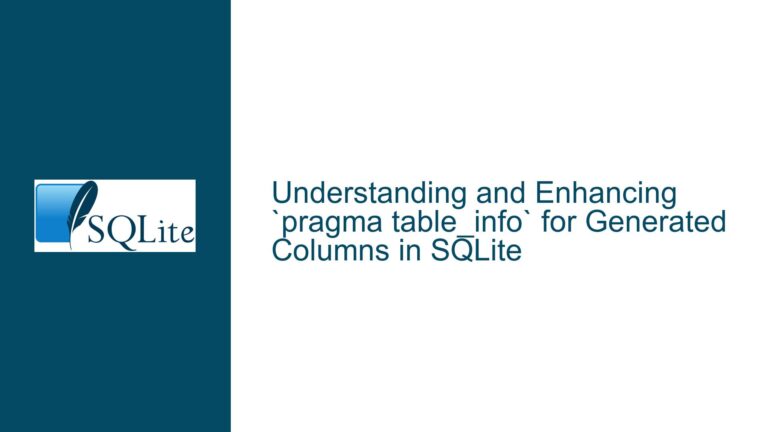SQLite B-Tree Order and Page Splitting Mechanisms
SQLite B-Tree Structure and Page Splitting Logic
The SQLite database engine employs a B+-Tree structure for organizing and managing data within its storage system. This structure is pivotal for ensuring efficient data retrieval, insertion, and deletion operations. The B+-Tree in SQLite is particularly tailored to work with the database’s page-based storage model, where each node in the tree corresponds to a page in the database file. Understanding how SQLite determines the order of its B-Tree and the conditions under which pages split is crucial for anyone looking to delve into the internals of SQLite or develop a similar system.
The order of a B-Tree, often denoted as ‘K’, refers to the maximum number of children each node can have. In the context of SQLite, this translates to the maximum number of cells (key-value pairs) that can be stored in a single page. However, unlike traditional B-Trees where the order is a fixed value, SQLite’s B-Tree order is dynamic and influenced by several factors, including the page size and the size of the keys and values stored within each page.
Dynamic Nature of K in SQLite B-Tree Pages
In SQLite, the value of K is not fixed and can vary from page to page. This variability arises due to the flexible nature of the record format used to store keys and values within the pages. The record format in SQLite is designed to be space-efficient, encoding integers in a variable-length format that depends on their magnitude. As a result, the amount of space occupied by each key and value can differ, leading to variations in the number of cells that can fit within a single page.
For internal pages of the B-Tree, which store keys and child pointers, the size of each cell is influenced by the size of the encoded integers representing the child pointers. Since these integers can vary in size, the number of cells that can fit within a page is not constant. This means that the K value for internal pages is determined by the available space in the page and the size of the encoded child pointers.
Leaf pages, on the other hand, store actual key-value pairs. The size of each cell in a leaf page depends on the size of the key and the associated value. Large keys or values may require overflow pages, further complicating the determination of K. Despite these complexities, SQLite ensures that each leaf page adheres to the B+-Tree property of maintaining a minimum number of cells, typically above floor(K / 2).
Page Splitting and K Value Determination
Page splitting in SQLite occurs when a page reaches its capacity and can no longer accommodate additional cells. The decision to split a page is based on the available space within the page rather than a fixed number of cells. When a page is full, SQLite splits it into two pages, redistributing the cells between them to ensure that both pages adhere to the B+-Tree properties.
The K value for a page is effectively determined by the amount of available space and the size of the cells it contains. For internal pages, the K value is influenced by the size of the encoded child pointers. For leaf pages, the K value depends on the size of the key-value pairs. Since these sizes can vary, the K value is not a fixed number but rather a dynamic value that changes based on the contents of the page.
In practice, SQLite ensures that each page maintains a sufficient number of cells to uphold the B+-Tree properties. For internal pages, this means having at least two keys, except in rare cases where page 1 is an internal page and has limited space due to the database header. For leaf pages, the minimum number of cells is determined by the available space and the size of the key-value pairs, ensuring that the tree remains balanced and efficient.
Practical Implications and Best Practices
Understanding the dynamic nature of K in SQLite’s B-Tree has several practical implications. For developers working on SQLite or similar systems, it is essential to recognize that the order of the B-Tree is not a fixed parameter but rather a variable that depends on the page size and the contents of each page. This understanding is crucial for optimizing storage and ensuring efficient data operations.
When designing a database schema, it is important to consider the potential variability in cell sizes and how it affects the K value. Choosing an appropriate page size can help balance the trade-off between storage efficiency and performance. Larger page sizes can accommodate more cells, reducing the frequency of page splits and improving read performance. However, larger pages may also lead to increased storage overhead and slower write operations.
Additionally, developers should be aware of the impact of large keys or values on the K value and the potential need for overflow pages. Efficiently managing large data items can help maintain a balanced B-Tree and prevent performance degradation. Techniques such as data compression or splitting large items into smaller chunks can be employed to mitigate these issues.
In conclusion, the dynamic nature of K in SQLite’s B-Tree is a fundamental aspect of its storage architecture. By understanding how K is determined and how page splitting is managed, developers can optimize their database designs and ensure efficient data operations. The flexibility of SQLite’s B-Tree structure, combined with its robust page management mechanisms, makes it a powerful and versatile database engine for a wide range of applications.






